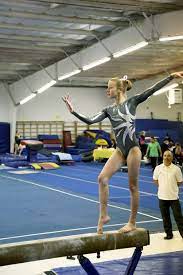Kids are constantly learning, but not all learning happens at a desk. For many children, their most powerful lessons happen while they’re moving—balancing on a beam, flipping on a mat, or mastering a cartwheel. That’s why gymnastics for kids is so much more than just a sport—it’s a launchpad for cognitive, emotional, and social growth.
This article explores how gymnastics directly supports learning, builds essential life skills, and provides a unique foundation for future success, both inside and outside the classroom.
Why Movement Matters for Developing Brains
Movement and learning are closely connected. When children engage in complex physical activity like gymnastics, their brains form and strengthen neural pathways—many of which are directly linked to academic performance.
Research shows that physical activity enhances executive functions—things like memory, attention span, and emotional regulation. These are critical skills for school-aged kids trying to stay focused in class, follow multi-step instructions, and problem-solve independently.
According to Harvard Health, aerobic activity boosts the size of the hippocampus—the brain area involved in verbal memory and learning. Gymnastics, which combines strength, cardio, and coordination, ticks every box.
Gymnastics Teaches the Brain to Focus
In a typical gymnastics class, kids are taught to follow sequences, remember routines, and correct their posture based on real-time feedback. This demands full attention.
Unlike free play or casual sport, gymnastics requires kids to:
- Maintain body awareness
- Listen to technical cues
- Focus on form and timing
- Persist through trial and error
These skills are closely linked with classroom readiness. A child who can hold a handstand for five seconds is likely the same child who can stay seated through a maths activity, listen carefully, and self-regulate when things get hard.
Children build these habits through consistent training—and the impact can be seen well beyond the gym.
The Confidence to Try, Fail, and Try Again
One of the most underrated benefits of gymnastics for kids is the resilience it builds. Progress comes slowly. A forward roll today becomes a cartwheel in six weeks, then maybe a handspring in six months. Kids quickly learn that improvement is a process, not a switch.
And because gymnastics doesn’t always come naturally, kids are gently introduced to the idea of safe failure. They fall, they get up, they try again. They cheer on their peers, and they take pride in every small win.
This mindset translates beautifully to school:
- Tackling tough homework without giving up
- Rewriting a paragraph until it makes sense
- Sticking with a maths concept that doesn’t click right away
Success in gymnastics fosters a growth mindset—a belief that effort, not talent, is the key to improvement.
Movement Supports Core Academic Skills
There’s a strong link between motor development and academic outcomes—especially in reading, writing, and numeracy. Kids who practise gymnastics regularly build both fine motor skills (used in handwriting) and gross motor coordination (linked with spatial awareness and pattern recognition).
Balancing, climbing, jumping, and swinging all strengthen postural muscles. This improves seated endurance and handwriting control, which are often overlooked but vital in school settings.
Additionally, rhythmic movement improves phonological processing—helping young children with letter sounds and early reading development.
And yes, gymnasts tend to have excellent maths brains too. Learning sequences, understanding timing, and estimating distance all help build number sense.
Social and Emotional Learning on the Mat
Gymnastics classes are a safe space for children to develop empathy, teamwork, and respect. While it might seem like a solo sport, kids work together in warm-ups, share equipment, and support each other through tricky routines.
These peer interactions help children practise:
- Waiting their turn
- Managing disappointment
- Accepting feedback
- Encouraging others
This social learning supports classroom dynamics. A child who feels seen, valued, and confident among peers is more likely to speak up in class, collaborate on projects, and handle challenges with maturity.
By supporting gymnastics for kids, parents are giving their children daily practice in managing feelings, solving problems, and relating to others.
Gymnastics Prepares Kids for All Sports (and Life)
Not every child will stick with gymnastics long-term—but the movement foundation it builds transfers to almost every other sport. Strength, coordination, flexibility, agility—these are skills that benefit kids whether they move into cricket, dance, swimming, or athletics later on.
Just like gymnastics for kids, many dynamic sports require balance, precision, and fast decision-making. Gymnastics builds those early.
And the best part? Kids love it. They feel successful. They feel strong. And when a child feels strong in their body, they start believing they’re strong in their mind too.
A Parent’s Perspective: It’s Not Just About Flips
Emma, a mum of two in Melbourne’s outer suburbs, enrolled her daughter Mia in gymnastics when she noticed she was struggling to focus in prep.
“Within a few weeks, I saw changes. She was sleeping better, sitting still longer, and even remembering her reader without constant reminders.”
It’s a story we hear time and time again—where gymnastics builds focus and confidence that spills over into academic life.
Another parent described it simply: “Gym made my kid believe she could do hard things.”
Ready to Start?
If you’re wondering whether gymnastics is right for your child, the answer is yes. Whether they’re four or eleven, there’s a class that fits their age and ability. Look for programs that keep it fun, safe, and encouraging. You’re not just signing up for flips—you’re investing in focus, confidence, and resilience.
And if your child already loves cricket or another sport, like gymnastics for kids, gymnastics can help sharpen the skills they already use and bring fresh energy to their routine.
Final Thought
In a screen-heavy world where kids are told to sit still, gymnastics gives them permission to move—and in that movement, they learn. Not just how to land a backflip, but how to concentrate, how to cope, how to keep going.

